Extended Edition: Kirby meets Kubrick

I've found Jack Kirby's comic book adaptation of 2001: A Space Odyssey to be a fascinating oddity ever since I learned about it, so when I was putting together my art book proposal in 2019, it made the list. Most of Worlds Beyond Time focuses on cover art, but Kirby is such a big name in comic book art that he was worth keeping in the mix.
But Kirby spent most of his career at Marvel, which famously retains the rights to all the artwork he did for them. I'm still a little unclear on how the rights permissions process works to this day, but Kirby's family never responded to my two or three attempts to contact them and I started the process for licensing directly through Marvel a little late, so the book entry never materialized. Here's how it would have gone.
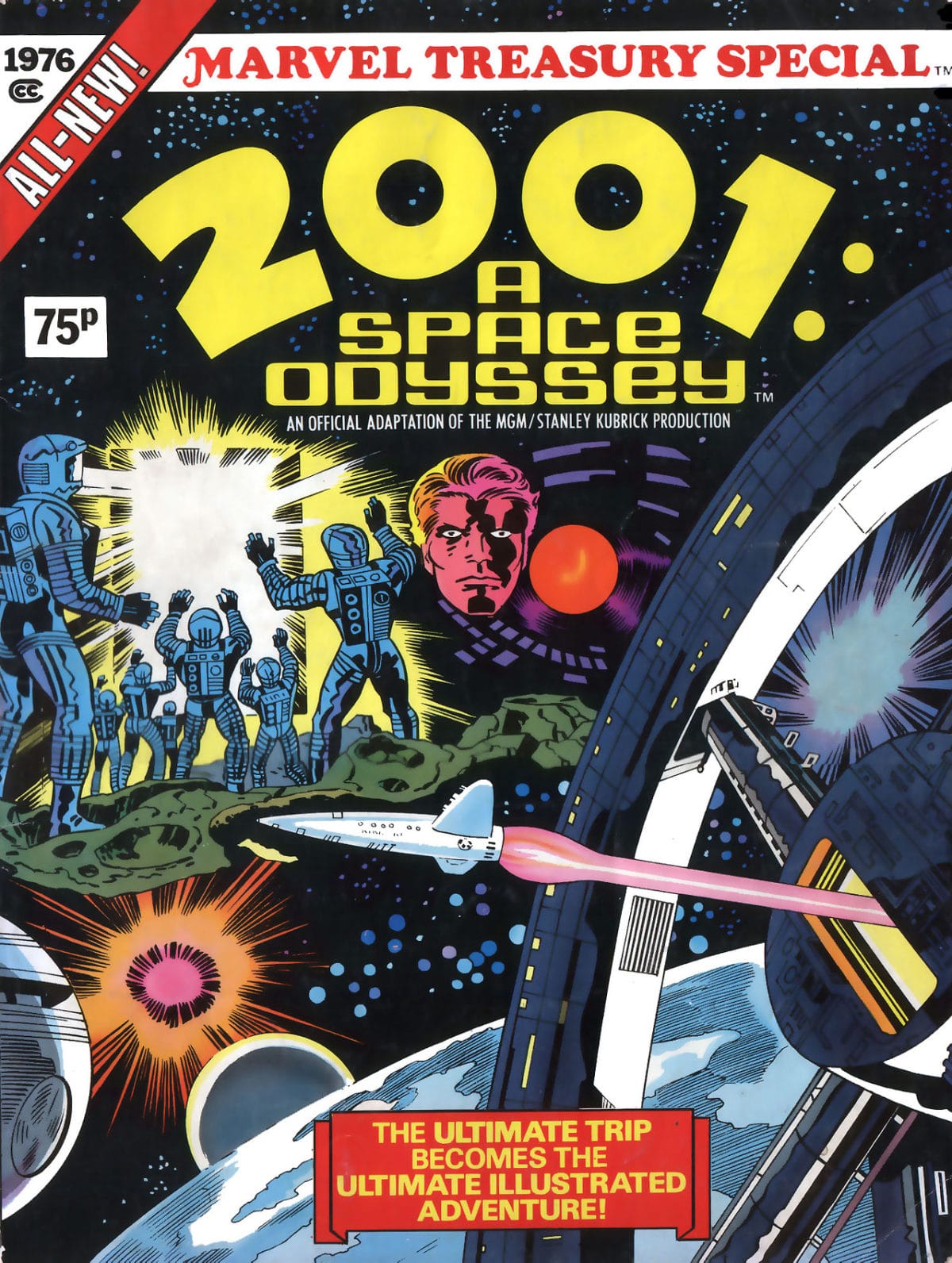
Stanley Kubrick’s 2001: A Space Odyssey is a famously subtle, terse 1968 sci-fi film, defined by what it doesn’t do as much as by what it does. Comics maestro Jack Kirby, co-creator of Captain America, the X-Men, and Black Panther, is famously bombastic, splashing his panels with juddering, fizzling, more-is-more energy. They’re both masters in their respective mediums, but on no condition should their styles ever meet.
In 1976, they did.
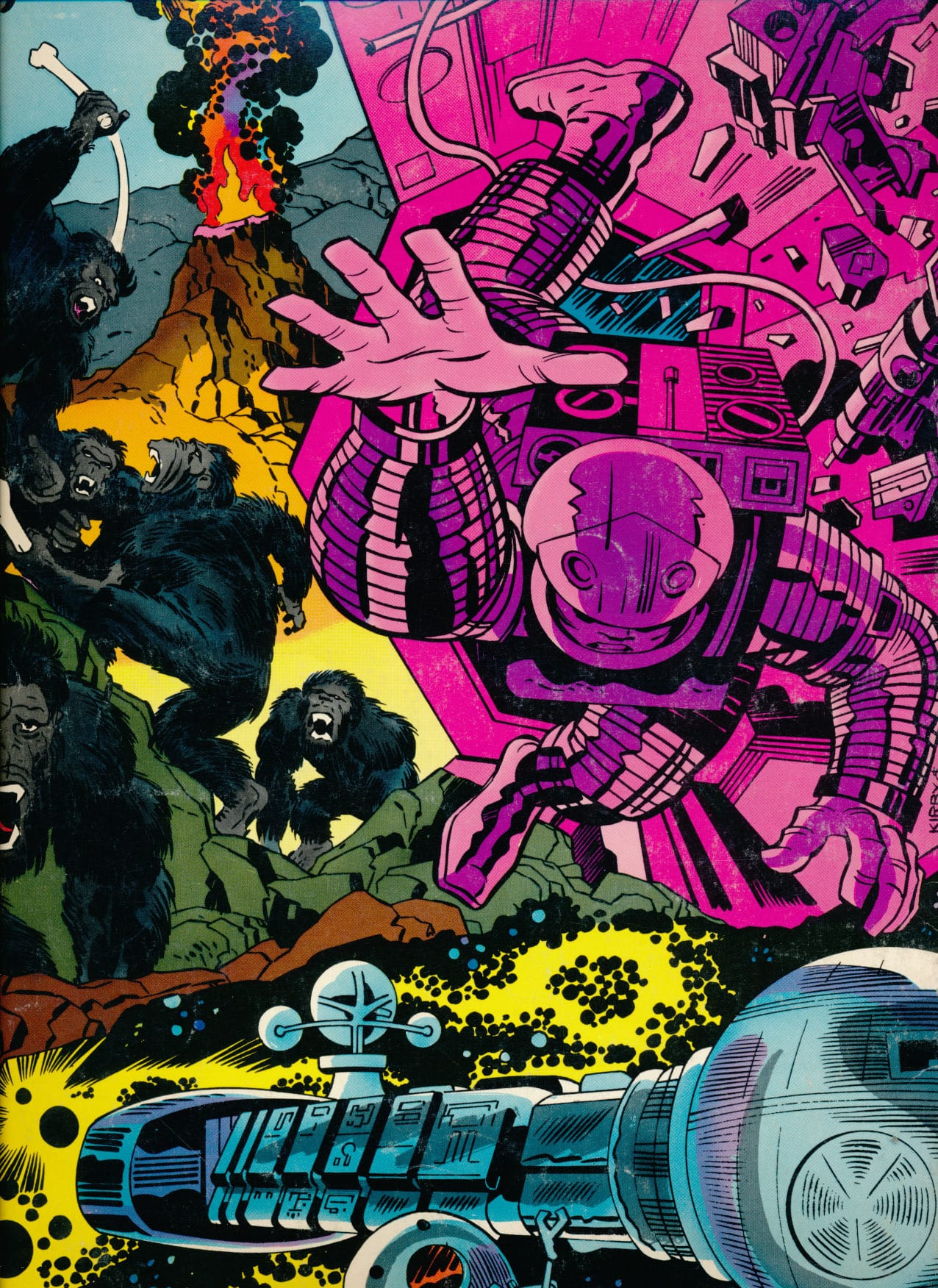
Jack Kirby adapted 2001 for Marvel comics, producing a single oversized treasury edition. He followed it up with a ten-issue run of an original 2001-inspired series from December 1976 to September 1977, beginning with three stories that were retreads of the film’s general plot beats.


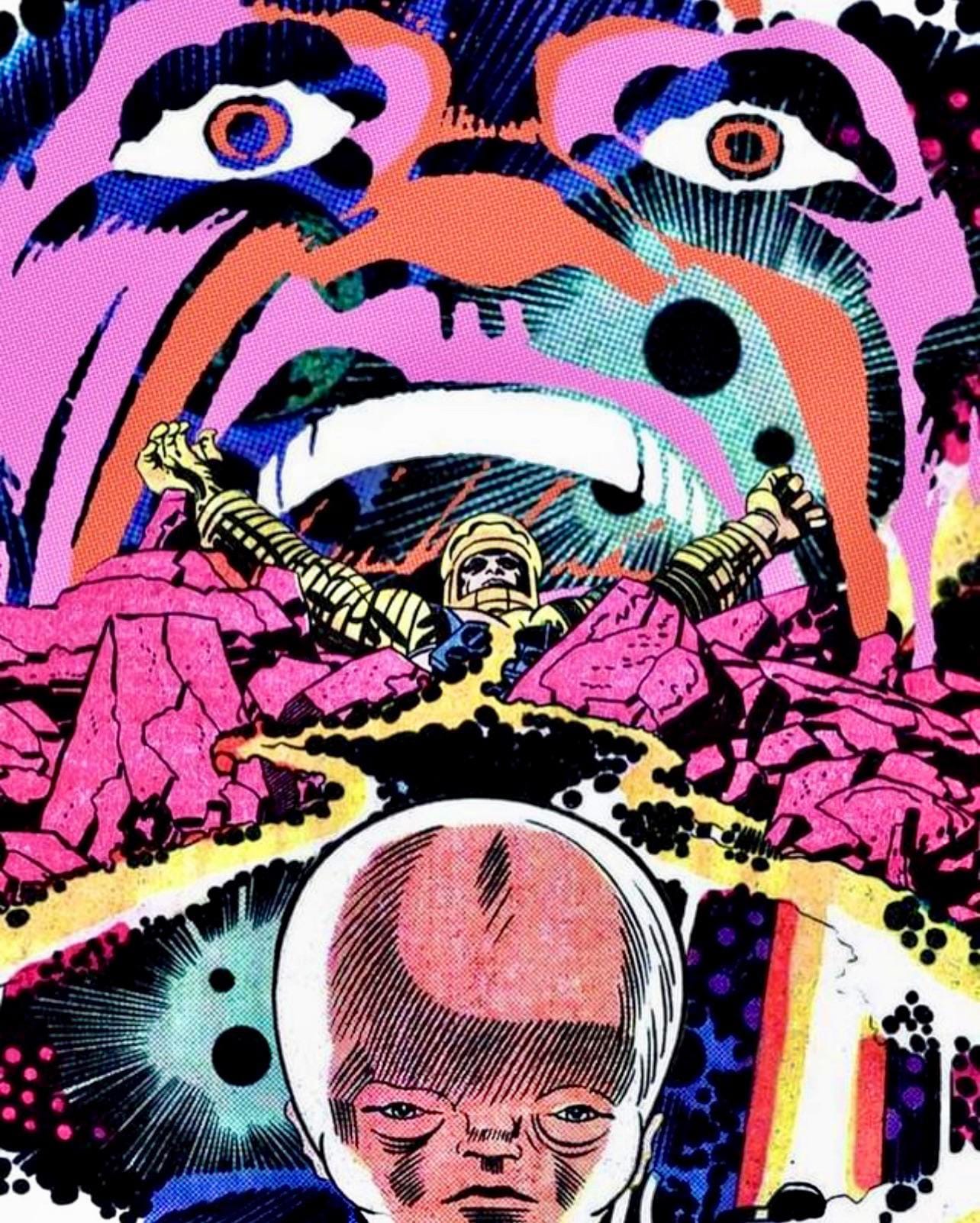
This series got increasingly less related to the film as it continued, with the final three issues featuring a sentient robot who becomes a superhero.
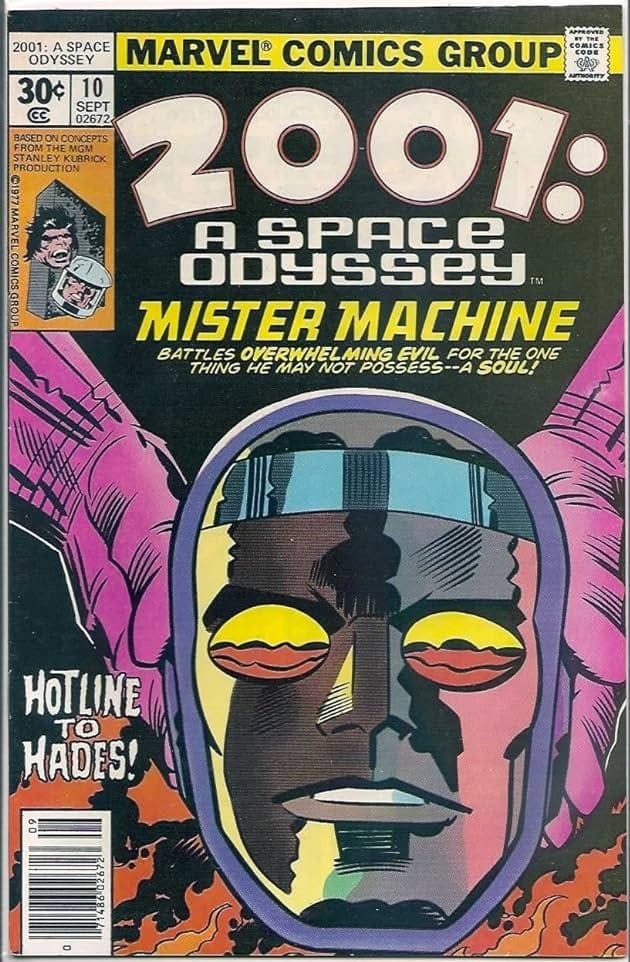
Kirby’s strengths are apparent in the art. The only problem is that they often work against the spirit of Kubrick’s film. The film has long single takes to establish mood, while Kirby was biased toward foreshortened panels that limited focus to boost dynamism. The worst element of the comic is its overwritten dialog, appearing in literally every panel to floridly explain something obvious. This is never a great move, but it stands out even more in contrast to the film’s defining lack of exposition.
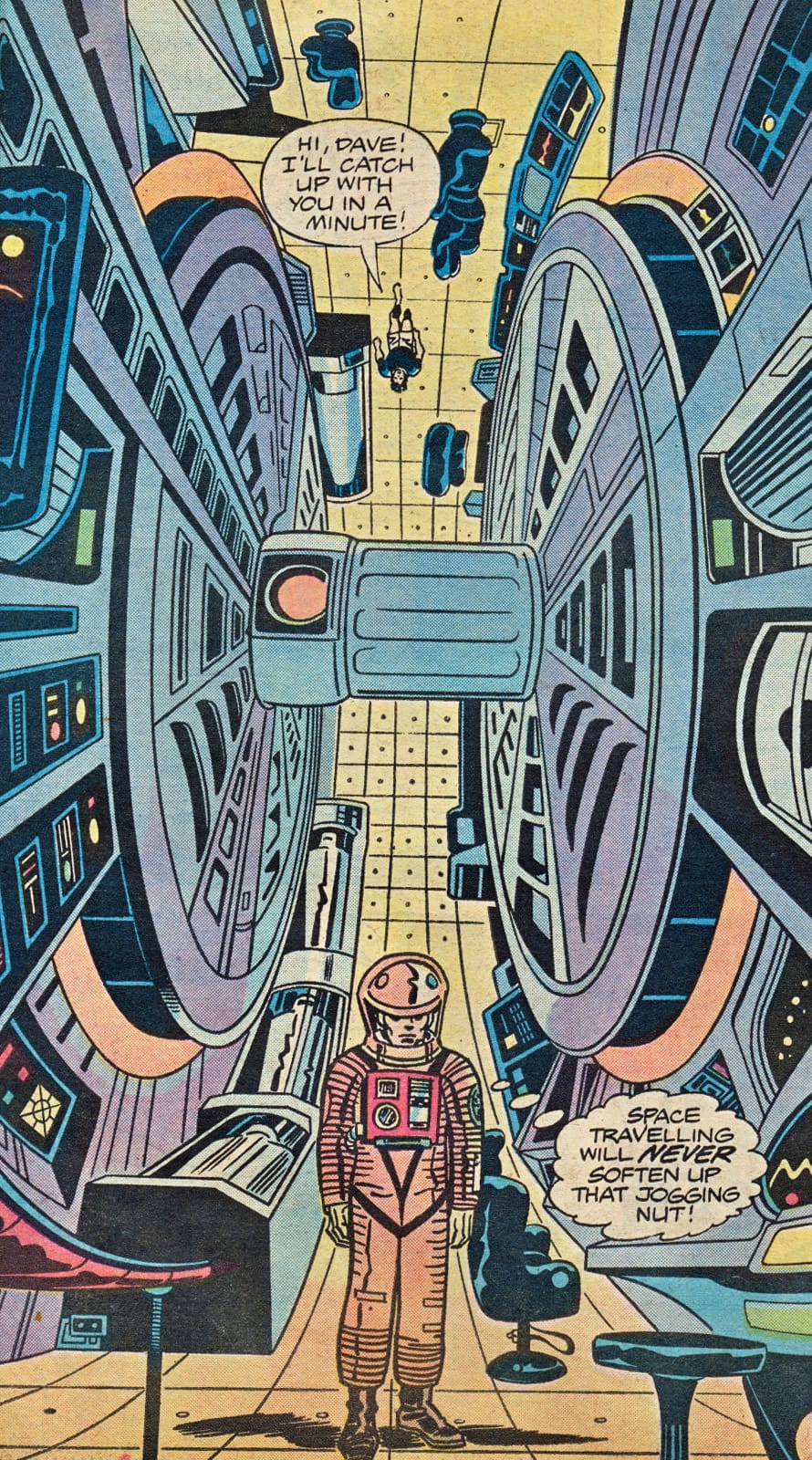
Today, Kirby’s 2001 adaptation, beautiful as it may be, is remembered as an oddity of a misfire from the skilled comics artist, assuming it’s remembered at all. Writing professor Julian Darius, writing in The Weirdest Sci-Fi Comic Ever Made, likened the work to a continuation of Citizen Kane by Frank Miller.
Despite a host of angry fan letters, Marvel didn’t learn a lesson about the dangers of adapting sci-fi movies into comics. They didn’t have a chance to, as 1977 was also the year the Marvel film adaptation pipeline hit upon a much more comics-appropriate success: a pulpy, action-driven, George Lucas-directed space fantasy with no monoliths whatsoever.
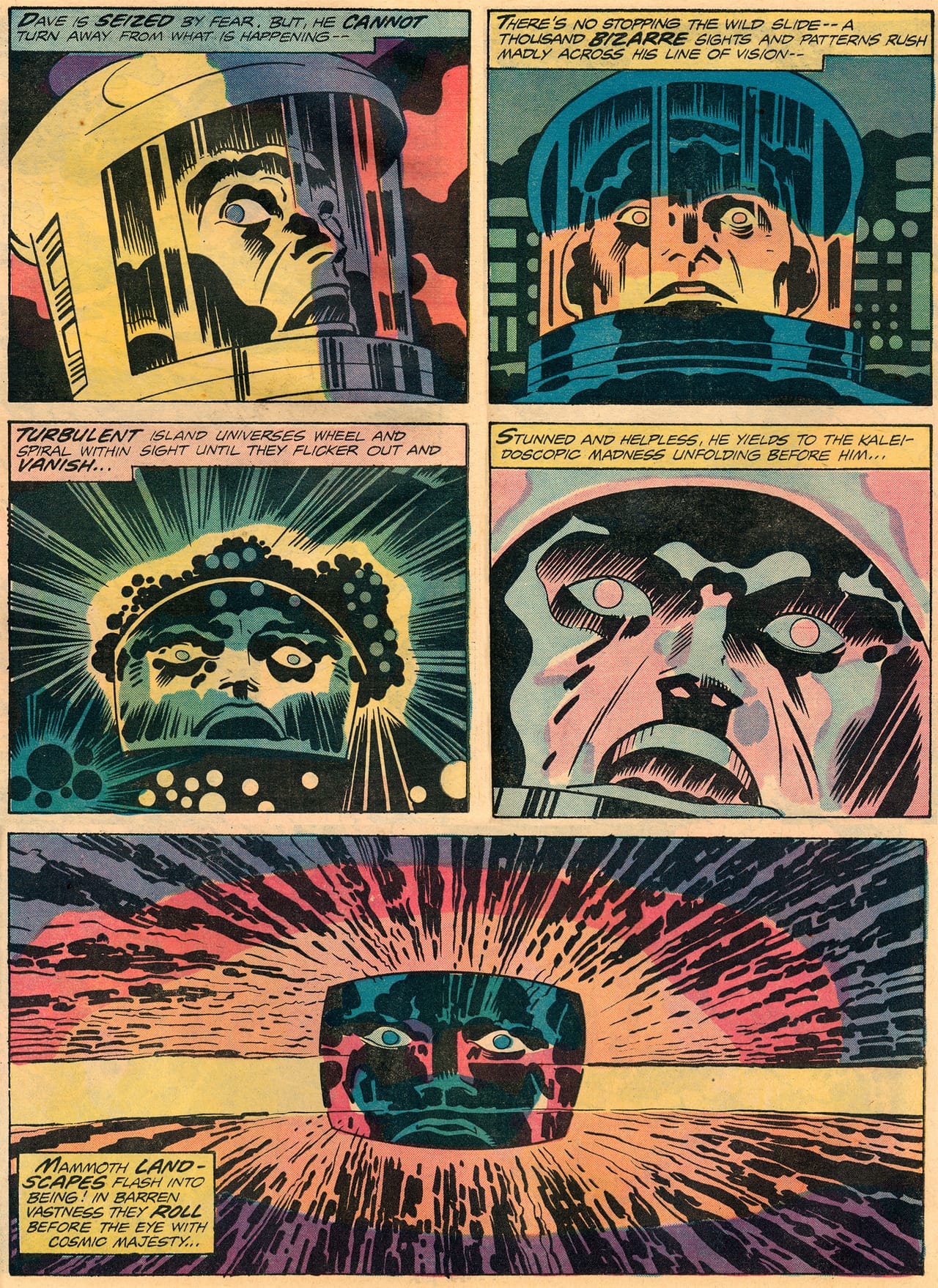
That's just the quick barebones summary of how strange a Kubrick/Kirby get-together is. For very fun and incredibly in-depth look, check out Julian Darius's The Weirdest Sci-Fi Comic Ever Made - there's a Kindle Unlimited ebook version, so it's pretty easy to access.
There are some fun blog posts and articles about the series, as well.
Finally, here are three fun scenes from Kirby's 2001 comic series that didn't make the cut for my book entry. They're Kirby's version of the famous time-jump match cut from the film, when a shot of a prehistoric tool transitions to a similar shot of a very futuristic tool. Kirby did three versions of the same idea before moving on to fresher concepts:
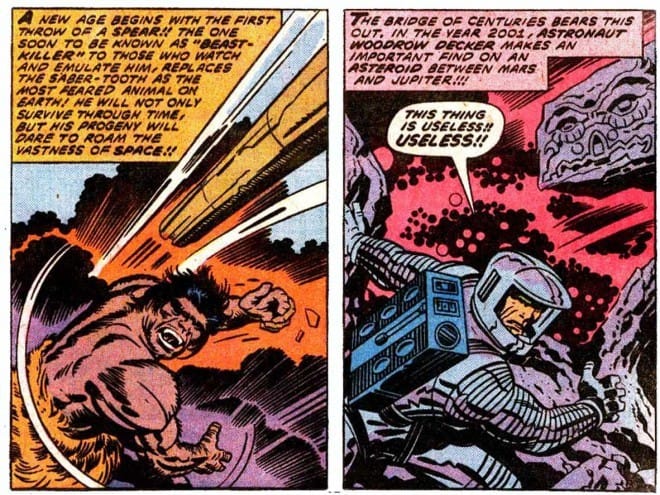
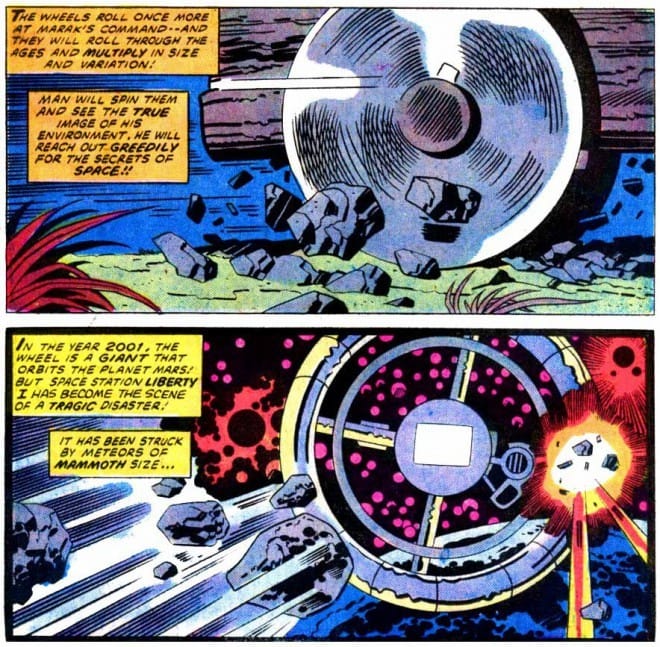
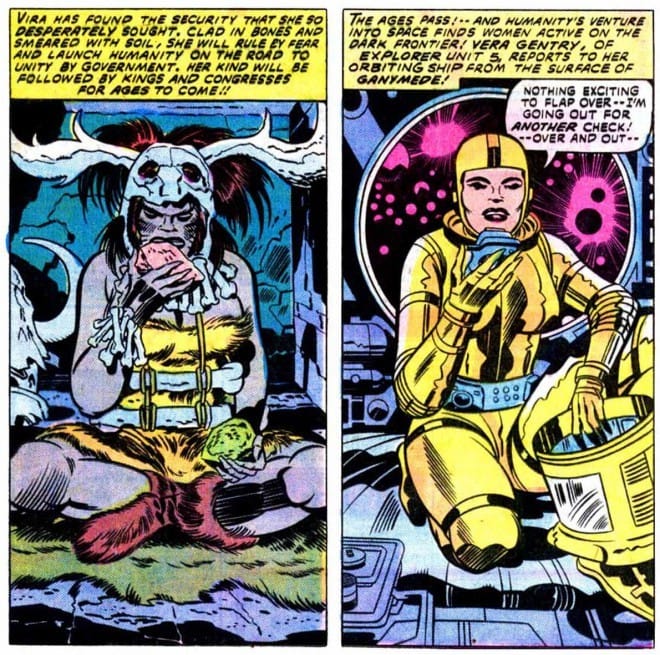
Next Time: Marine Life out of Water